Barry Gordon Hadlow: Sherele Moody on the moment she realised her stepdad was a child killer
The revelation that evil killer Barry Gordon Hadlow had murdered a little girl left his family shell-shocked. Horrifically, there was more to come.
Behind the Scenes
Don't miss out on the headlines from Behind the Scenes. Followed categories will be added to My News.
There wasn’t one thing in particular that gave Barry Gordon Hadlow away as a killer.
Even to those who shared their home, those that thought they knew him best – like his stepdaughter, Sherele Moody – the idea he could be responsible for a little girl’s death came as the most terrifying of revelations.
That child was nine-year-old Stacey-Ann Tracy.
On a rainy morning on May 22, 1990, Stacey-Ann was walking to school when Hadlow abducted, raped and dumped her body beneath a tree at Bungil Creek, in southwest Queensland.
At the time, Hadlow was on parole after serving 22 years for the murder of five-year-old Townsville girl, Sandra Dorothy Bacon.
But upon his release from jail, he never revealed his true past to the new family he took up with or the Roma locals who welcomed him into their close-knit community.
“I answered the door to a very large police contingent in our front yard, a detective handing us a warrant, and they came in,” Ms Moody, who lived with Hadlow for several years during her teens after her mother began a relationship with him, said.
“They searched the house. They pulled the place to pieces. All they told us was that they were investigating the murder of a child and that they were there to get evidence. Eventually, they took Barry out of the house, put him in a police car and drove off.”

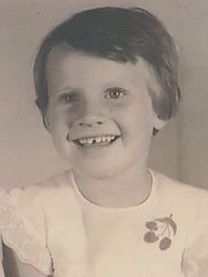
Hadlow was charged with Stacey-Ann’s murder and Ms Moody played an integral role assisting police by identifying objects, found at the murder scene, as belonging to her family home. This helped tie Hadlow to the crime.
“The police found evidence around Stacey’s body, relating back to the crime and that evidence came from my mother’s house. So there were things like a bed sheet that had a very distinctive pattern on it that I could definitely put as being at my mother’s home,” Ms Moody said.
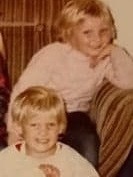

“The minute I walked into that evidence room, I knew that they had the right person. And as a result, my confidence in that was so great that I agreed to be a witness for the prosecution in terms of being able to identify all of those things.”
Hadlow denied his guilt and Ms Moody’s decision to testify against her former stepfather caused a rift in her family, with her mother choosing to stand by her husband, remaining married to him after he was convicted and sentenced to life.
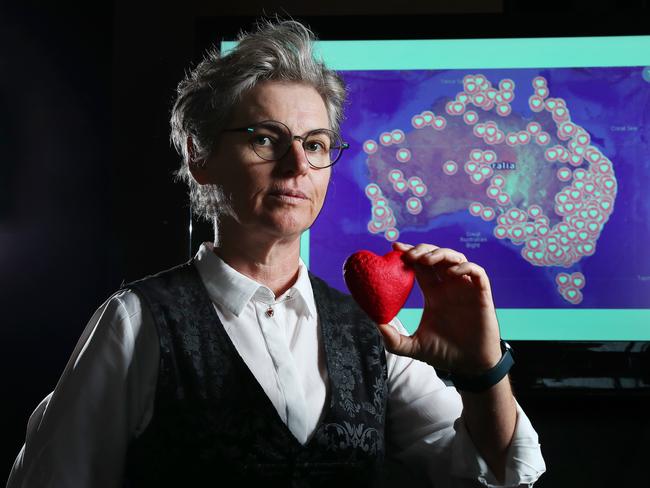
“My mother was protective of him. She stood by his side long after he was convicted of murder. And I felt that at least someone in my family owed it to Stacey-Ann’s family to just step up and do the right thing,” Ms Moody said.
Of course, the benefit of hindsight shows the chilling extent of Hadlow’s depraved duplicity.
Ms Moody recalls seeing him in what would have been the direct aftermath of the murder.
“He was very excited that day. He was talking about a little girl who had gone missing. He was really hyper. He was in a very weird headspace.
“The next day he got up. He put on his State Emergency Service uniform, and he went and joined the search for Stacey-Ann I again. He was in that kind of really weird headspace.
“Super excited about the idea of going to help search for this little girl,” Ms Moody said.
Witnessing a murder case unfold in such close proximity, and the way it was reported in the media, inspired Ms Moody to become a journalist herself as she felt the coverage often fell short of the full story.
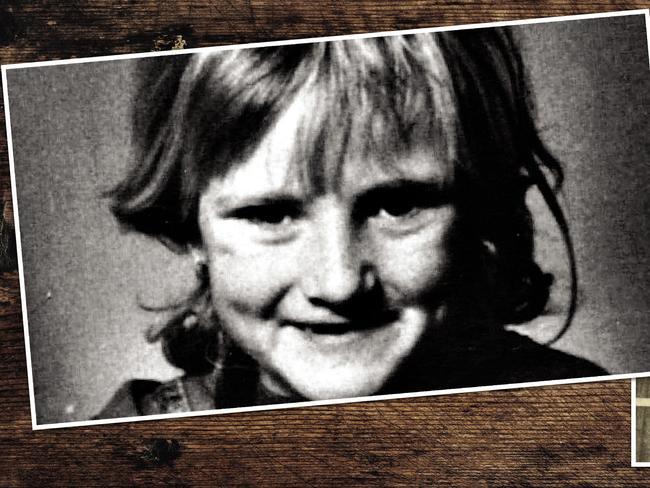
After many years covering crime stories for News Corp Australia, reporting on countless lives lost to murder and domestic and family violence, it became pertinent to her that the high number of victims meant their names and memories were too easily forgotten.
As a result, Ms Moody began The Red Heart Campaign, an online memorial to Australian lives lost as a result of murder, manslaughter or neglect, from white settlement to the current day.
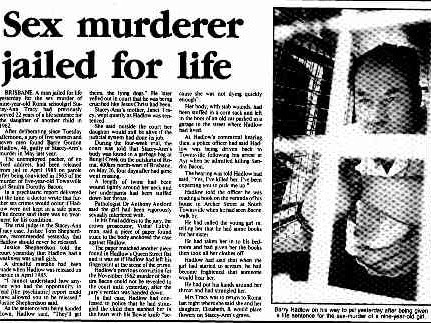
It includes an interactive map and is a way for their names and memory to live on in the history books, long after their own lives were so cruelly cut short. It is a project that has been supported by the families of Stacey-Ann Tracy and Sandra Bacon – both victim’s to Hadlow.
“I am glad that they are able to know that their daughter, their sister, that granddaughter is memorialised in such a public way and that her name will be there long after I die, long after they die and for generations to come. And that at the end of the day, her death is bringing solace not only for her family and Sandra Bacon’s family, but also for the many thousands of women and children who have been killed in Australia since white settlement,” Ms Moody said.
For more interviews that go behind-the-scenes of crime reporting watch True Crime with Amelia Saw
Originally published as Barry Gordon Hadlow: Sherele Moody on the moment she realised her stepdad was a child killer


